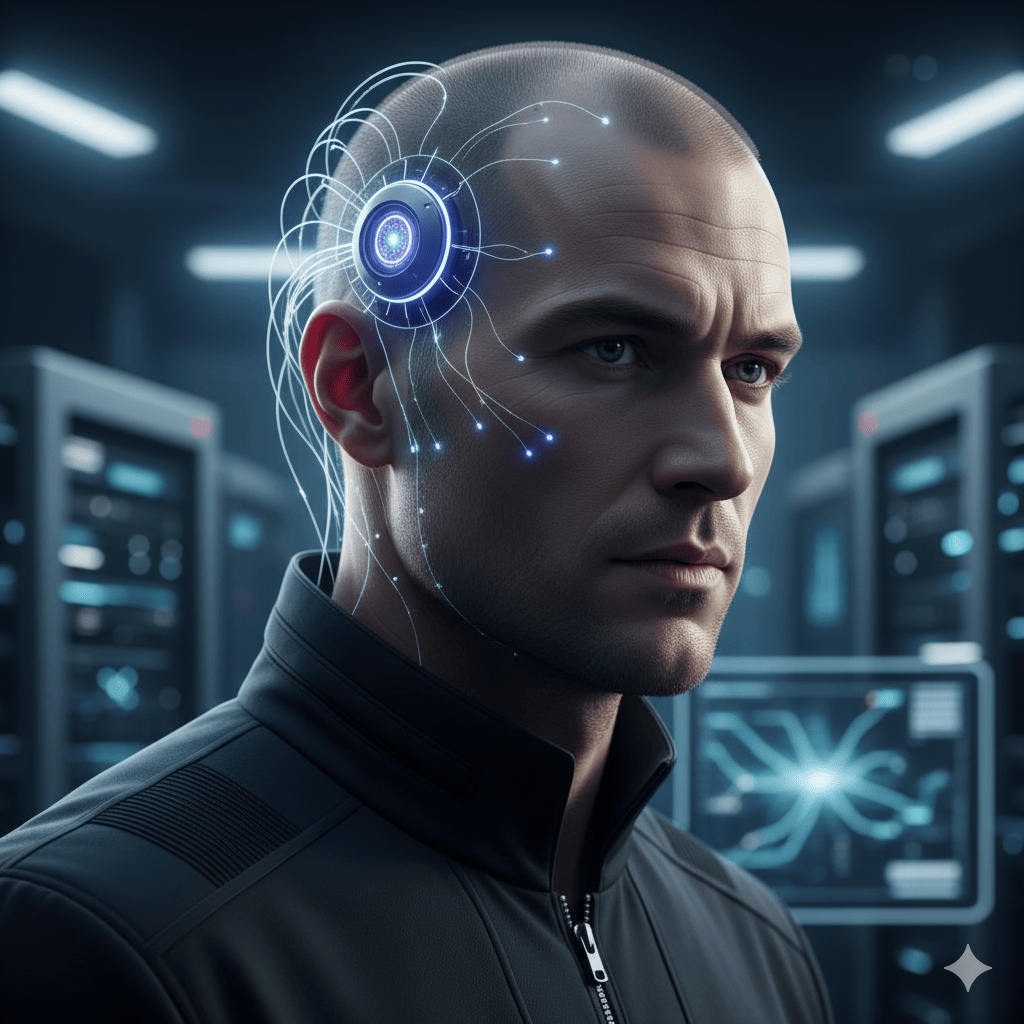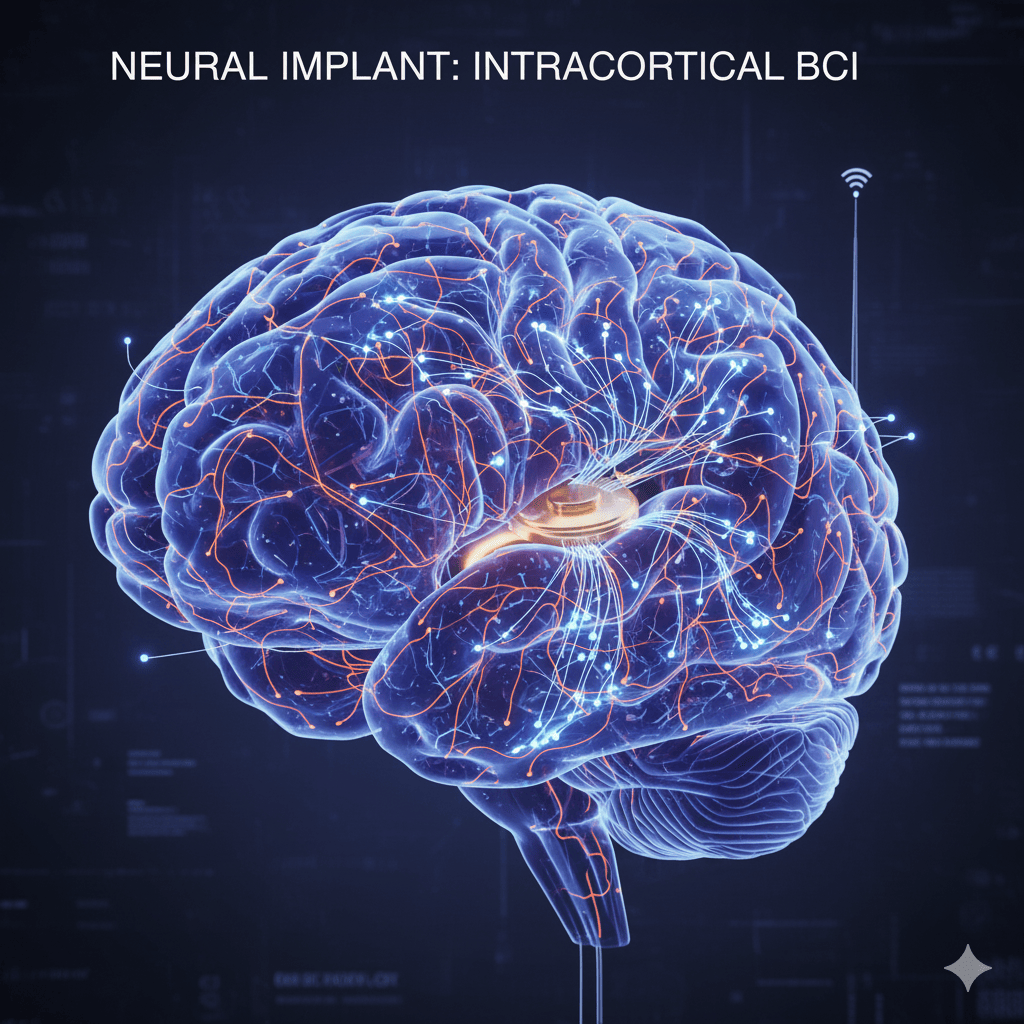What if you could control a device with your brain — no touch, no voice, no gesture? That’s the promise of Brain-Computer Interfaces (BCIs) and neural implants. These technologies create direct communication pathways between the brain and external devices, offering possibilities from restoring mobility and communication to merging human cognition with machines. In the past few years, advances in neuroscience, microelectronics, AI, and materials engineering have accelerated this field.
What Are BCIs and Neural Implants?
A brain-computer interface (BCI) is a system that records neural signals, decodes them, and translates them into commands for external devices — or vice versa. Neural implants are devices placed on or inside brain tissue to sense or stimulate neural activity.
BCIs can be:

- Invasive: Devices implanted in the brain (intracortical) offering high signal quality but using surgical intervention.
- Non-invasive / partially invasive: EEG, ECoG, or wearable sensors that avoid deep implantation but often sacrifice signal fidelity.
- Hybrid: Combinations that balance invasiveness and performance.
The core components are sensors (electrodes), signal acquisition systems, decoding algorithms, and actuators (robot arms, cursors, stimulators).
Neuralink, a well-known company, describes its implant as fully implantable, cosmetically invisible, with flexible threads and many electrodes.
Their system uses polymer probes, a robotic surgical implant, and custom electronics to place thousands of electrodes.
Recent Advances & Breakthroughs
- A human trial by the University of Michigan implanted a dime-sized BCI with 421 microelectrodes to record neural signals.
- Synchron, a competitor, has connected its BCI to Apple’s Vision Pro headset, allowing limited control of the headset via brain signals.
- Georgia Tech has developed imperceptible microstructure brain sensors that fit between hair follicles and slightly under the skin, offering continuous BCI use with minimal disruption.
- Neuralink’s roadmap includes Blindsight, an implant for vision restoration, and further expansion of implanted device capabilities.
How It Works — From Signal to Action

- Neural sensing: Microelectrodes pick up electrical potentials from neurons.
- Signal amplification & filtering: Raw signals are noisy; preprocessing is needed.
- Decoding: Machine learning/AI models decode user intention (e.g. intended movement).
- Control / stimulation: Commands control devices (robotic arm, cursor) or provide stimulation feedback.
- Feedback loop: Sensory feedback may be provided back to the user’s brain to close the loop.
Emerging research applies AI to BCI decoding, improving accuracy and adaptation to changing neural dynamics.
Challenges, Risks & Ethical Considerations
- Biocompatibility & durability: Long-term implantation faces immune response, scarring, and signal degradation over time.
- Surgical risks: Invasive implants require precise surgery and carry risk.
- Signal stability & drift: Neural signals change over time; decoders must adapt.
- Data privacy & neural rights: Brain data is deeply personal. Who owns, controls, or can access it?
- Ethical & societal concerns: Enhancements beyond medical need, inequality, autonomy, consent, and misuse must be addressed.
Applications & Use Cases
- Restoring movement / prosthetics: BCIs enable paralyzed individuals to move robotic limbs or control exoskeletons.
- Communication for locked-in patients: Patients unable to speak can convey thoughts via BCI.
- Neurorehabilitation: Stimulating the brain to aid recovery after stroke or injury.
- Sensory augmentation: Potentially adding senses or enriched feedback (e.g. infrared sensing, direct memory/AI links).
- Cognitive enhancement / memory augmentation (future): In theory, memory storage, speed-ups, or seamless human–AI integration.
One real-world example: Cognixion, a startup, is trialling non-invasive BCI + Apple Vision Pro to help paralyzed individuals communicate via thought.
The Road Ahead & Vision
While commercial products are years away for most applications, the trajectory is promising. Improvements in materials, microelectronics, signal processing, and AI will drive more stable, smaller, safer implants. Regulatory and ethical frameworks will shape adoption.
A future possibility is neuroprosthetic augmentation — merging human cognition and computing environments. But before that, clinical applications (mobility, communication) will define the near-term impact.

